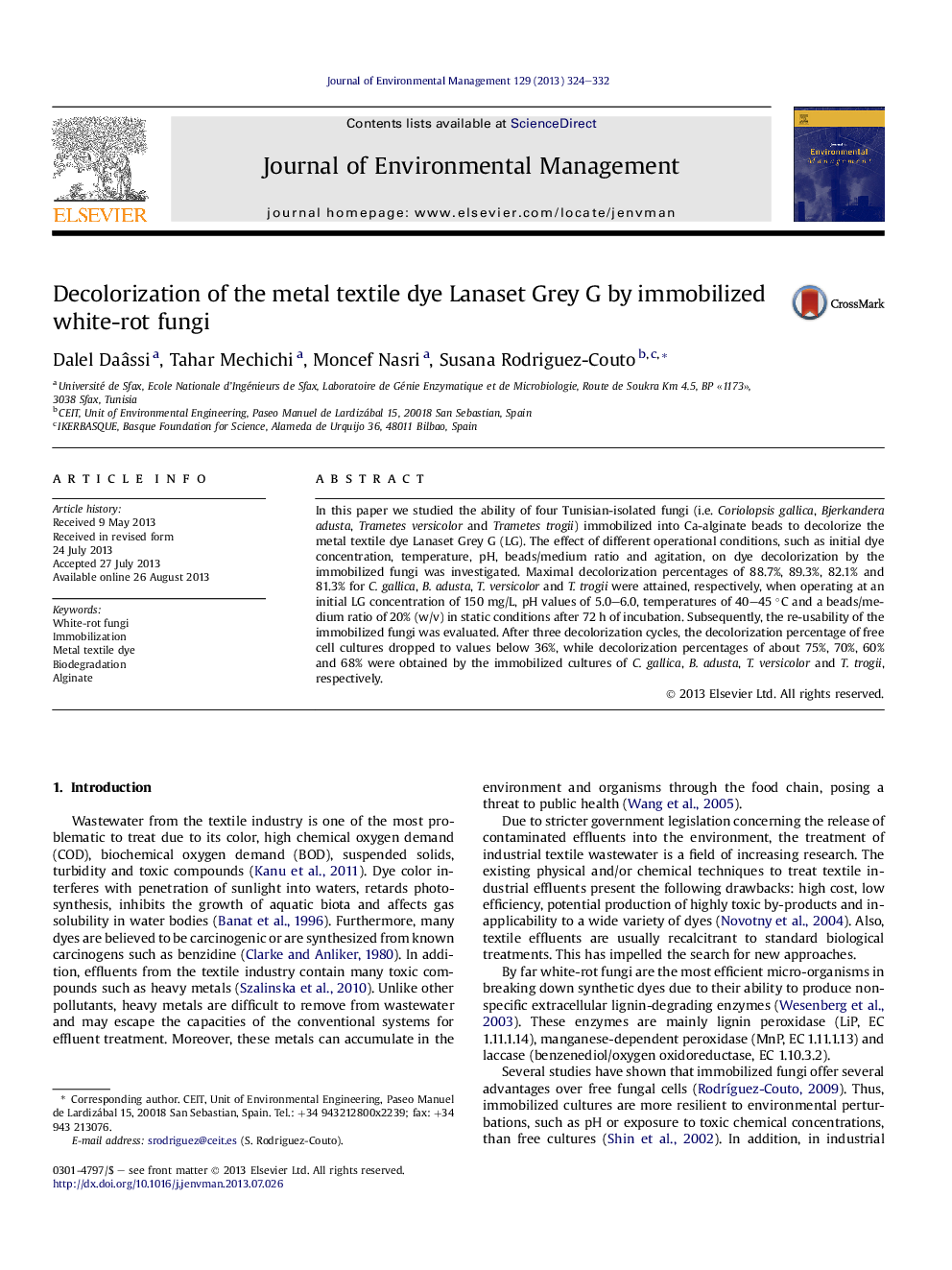| Article ID | Journal | Published Year | Pages | File Type |
|---|---|---|---|---|
| 1056174 | Journal of Environmental Management | 2013 | 9 Pages |
•The ability of 4 Tunisian-isolated fungi to decolorize Lanaset Grey G was studied.•Immobilized cultures led to higher decolorization percentages than free ones.•Immobilized fungi were able to decolorize Lanaset Grey G in 3 successive cycles.•Laccase was the major ligninolytic enzyme involved in dye decolorization.
In this paper we studied the ability of four Tunisian-isolated fungi (i.e. Coriolopsis gallica, Bjerkandera adusta, Trametes versicolor and Trametes trogii) immobilized into Ca-alginate beads to decolorize the metal textile dye Lanaset Grey G (LG). The effect of different operational conditions, such as initial dye concentration, temperature, pH, beads/medium ratio and agitation, on dye decolorization by the immobilized fungi was investigated. Maximal decolorization percentages of 88.7%, 89.3%, 82.1% and 81.3% for C. gallica, B. adusta, T. versicolor and T. trogii were attained, respectively, when operating at an initial LG concentration of 150 mg/L, pH values of 5.0–6.0, temperatures of 40–45 °C and a beads/medium ratio of 20% (w/v) in static conditions after 72 h of incubation. Subsequently, the re-usability of the immobilized fungi was evaluated. After three decolorization cycles, the decolorization percentage of free cell cultures dropped to values below 36%, while decolorization percentages of about 75%, 70%, 60% and 68% were obtained by the immobilized cultures of C. gallica, B. adusta, T. versicolor and T. trogii, respectively.
